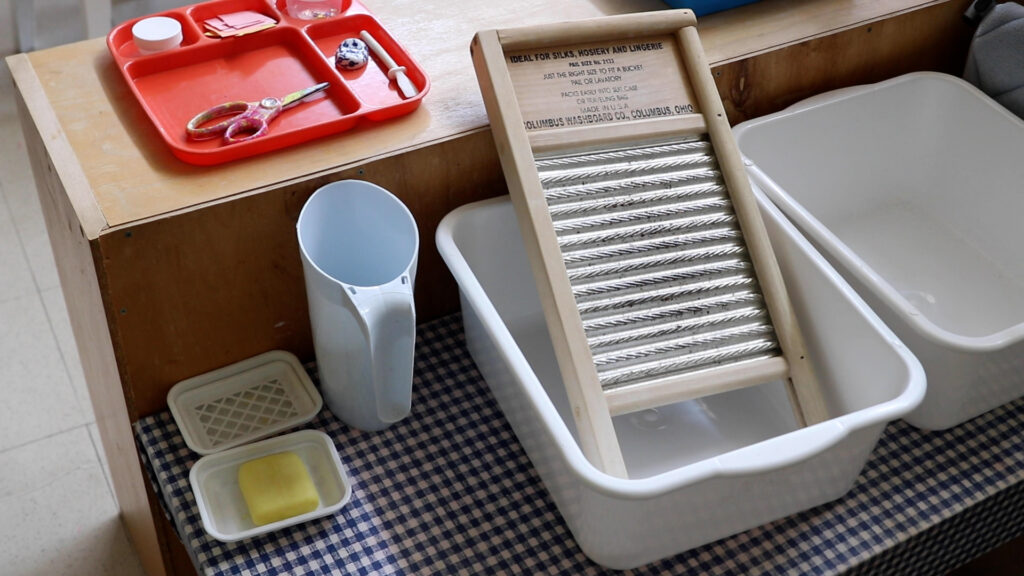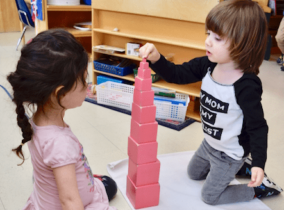Montessori Materials

When you enter a classroom at OMS, you may notice materials which are unfamiliar. Many of these are specially-designed activities that support goals such as developing fine motor skills or teaching the times tables. These materials are designed for the student to complete independently, and often have a concrete goal so the student can easily measure their own success.
In this post, we’ll take a look at some of the most common Montessori materials:
Cylinder Blocks
This block puzzle, found in the Casa classroom environments, helps young students with problem-solving, fine motor skills, and shape/pattern recognition.
Golden Beads
When Montessori students learn mathematical concepts, they do so in a hands-on way that allows them to see and touch the problems in front of them. Golden beads help the student understand our base-10 number system, and allow them to gain a deeper understanding of how different units work together.
Mathematical Charts
Memorizing number facts can be a very abstract concept. The Montessori Mathematical charts not only show students the connections between numbers and allow them to easily solve problems, but they open up a world of possibilities and activities that help students discover the joy of math!
Practical Life Materials
The practical life area of the Casa classroom represents the culture of the community. These are materials that help a child learn to take care of themselves and their environment. The child is also introduced to one to one lessons with their teacher, how to choose their work and how to take the time they need to explore and complete their work.






